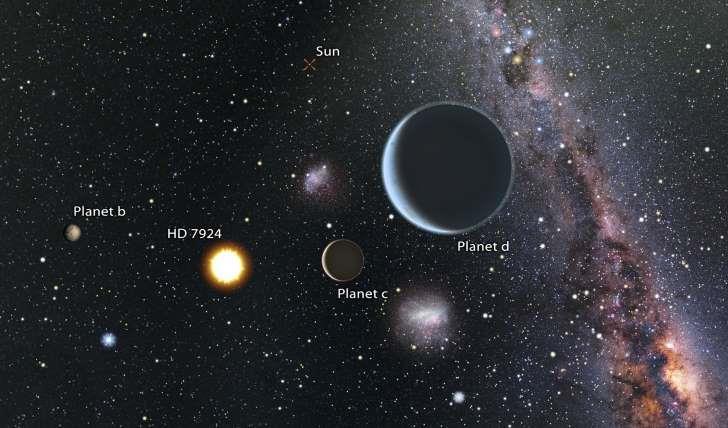April 29, 2015
Astronomers have discovered three new “super-Earths” orbiting a star merely 54 light-years away. These planets, which are larger than Earth but smaller than our solar system’s giants such as Neptune, were discovered using robotic telescopes at the Lick Observatory in California and the Fairborn Observatory in Arizona.

superearths
April 29, 2015
Astronomers have discovered three new “super-Earths” orbiting a star merely 54 light-years away. These planets, which are larger than Earth but smaller than our solar system’s giants such as Neptune, were discovered using robotic telescopes at the Lick Observatory in California and the Fairborn Observatory in Arizona.

superearths
“The three planets are unlike anything in our solar system, with masses seven to eight times the mass of Earth and orbits very close to their host star,” Lauren Weiss, a graduate student at the University of California, Berkeley, and an author of the study published in the Astrophysical Journal, said in a statement.
The term super-Earth is used only to denote the mass of the planet and does not imply anything about its surface conditions. And, given that these three planets orbit their host star, HD 7924, at a distance closer than Mercury orbits the sun, chances of life on them are extremely slim.
However, this discovery assumes special significance because it marks the first time robotic telescopes have been successfully used to find such planets, offering scientists a way to speed up search for extra-solar planets.
“This level of automation is a game-changer in astronomy,” Andrew Howard, a professor of astronomy at the University of Hawaii and a co-author of the study, said in the statement. “It’s a bit like owning a driverless car that goes planet-shopping.”
While the first evidence of planets orbiting HD 7924 was found by scientists at the W.M. Keck Observatory in Hawaii in 2009, the discovery of these planets was only made possible by further observations using the Automated Planet Finder (APF) Telescope at California's Lick Observatory and the Automatic Photometric Telescope (APT) at Arizona's Fairborn Observatory.
“We initially used the APF like a regular telescope, staying up all night searching star to star. But the idea of letting a computer take the graveyard shift was more appealing after months of little sleep. So we wrote software to replace ourselves with a robot,” Benjamin J. Fulton, a co-author of the study, said in the statement.
The location of these planets, pinpointed after studying the wobble of the host star caused by their gravitational pull, were later confirmed by the Keck Observatory.
“The discovery demonstrates the APF’s ability to find low-mass planets around nearby stars,” Weiss said in the statement. “Robotic telescopes are going to be the way we find planets in the future.”
Courtesy: International Business Times















































































































